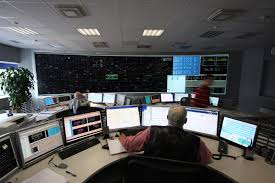Analytics, Ecology, Energy, Energy Market, Estonia, Good for Business
International Internet Magazine. Baltic States news & analytics
Wednesday, 17.12.2025, 17:33
Estonia: Renewable energy production up 1/5 on year in Q3
 Print version
Print version |
|---|
Renewable energy made up 19% of the total amount of electric
energy consumed in Estonia in the third quarter, the transmission system
operator Elering said. Estonia's
target for renewable energy for 2018 is 16.1%. Renewable energy made up 16.3%
of consumption across the first three quarters of the year.
The increase in the amount and share of renewable energy
year over year was caused foremost by an increase in the volume of wind energy,
which made up 36 % of Estonia's total renewable energy output in the third
quarter, and the 143 GWh produced is more than 10 % more compared to
the third quarter of last year,
Elering said.
The wind energy subsidy paid out by Elering in the first nine months of the year
totaled 17.4 mln euros, 35 % less than during the same period last
year. The subsidy was paid on 82% of the total amount of wind energy generated
during the third quarter and the subsidy totaled 6.3 mln euros. Altogether
56% of the sum total earmarked for wind energy subsidies for the whole year was
paid out during the nine months.
In the third quarter 63% of the renewable electric
energy produced in Estonia was produced from biomass, biogas and waste. In
all 253 GWh of electricity was produced from these sources in the three months,
a quarter more than in the third quarter of 2017.
Electricity produced from biomass, biogas and waste received
14 mln euros in subsidies during the third quarter of 2018, while 38 mln euros
in subsidy has been paid out in the first nine months of the year.
Due to a relatively small average amount of rainfall, only
one GWh of hydro energy was produced during the quarter and 33,380 euros
was paid out in subsidies on hydro energy.
The number of subsidized solar panel owners is continuing to
increase quickly, and the amount of solar energy transferred to the grid in the
three months totaled five GWh. Thanks to additional solar panels, this
indicator has increased more than threefold compared to last year. According to
the weather service, there were also more hours of sunshine this year than the
year before.
Since most of the solar energy generated in Estonia is
consumed by the micro-producers themselves, the amount actually generated with
solar panels is estimated to be 4-5 times the amount qualifying for subsidy.
During the quarter, Elering
paid high-efficiency cogeneration support in the amount of 116,000
euros, approximately 75% less than in the same quarter of 2017 due to
warm weather and small heat load. Altogether four GWh of electric energy was
produced in the high-efficiency cogeneration regime.
Renewable energy subsidy and high-efficiency cogeneration
support is financed by the electricity consumers through the renewable energy
charge. During the quarter, Elering
collected altogether 15.4 mln euros of renewable energy charge and paid
out 20.3 mln euros in subsidies.








 «The Baltic Course» Is Sold and Stays in Business!
«The Baltic Course» Is Sold and Stays in Business!

